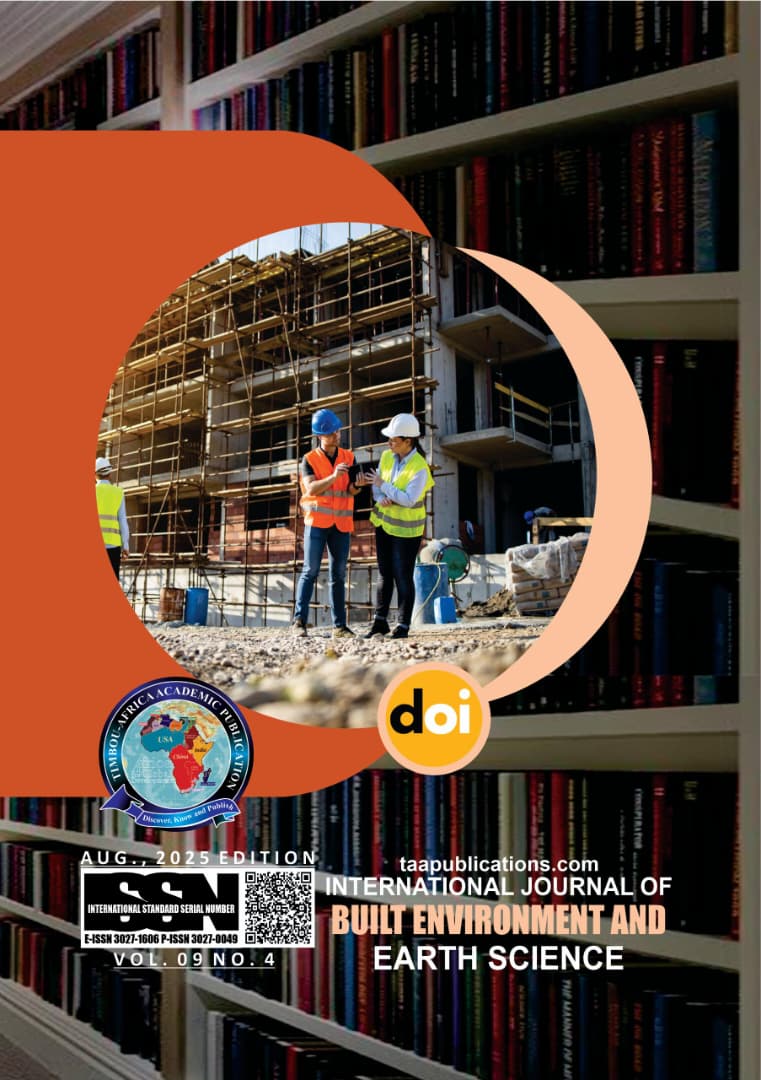IMPACT OF FREQUENCY AND TYPES OF COORDINATION ISSUES ON WORKING DRAWINGS AND SPECIFICATIONS IN THE NIGERIAN CONSTRUCTION INDUSTRY

Abstract
Coordination inefficiencies in working drawings and specifications continue to affect project quality and delivery timelines in the building industry in Nigeria. This study examines the frequency and characteristics of these problems and assesses how they affect the quality and compliance of documents. A descriptive survey involving 506 construction professionals, including architects, engineers, contractors, and surveyors, was conducted using structured questionnaires. The data were analyzed using descriptive statistical methods, including frequency distributions, percentages, means, and relative index calculations. Findings revealed that 71.3% of respondents were female, and most (51.4%) held a master’s degree, reflecting a highly educated sample. Coordination issues were prevalent, with professionals reporting frequent revisions of documents (Relative Index = 0.755) and strong agreement that cross-disciplinary collaboration improves drawing quality (RI = 0.792). Weak integration of regulatory updates was also highlighted (RI = 0.734). Participants recommended broader professional engagement, targeted training in documentation standards, adoption of digital coordination tools, and strengthened enforcement mechanisms. The study concludes by advocating for modernized quality control strategies and inclusive project documentation processes to improve communication, regulatory adherence, and output quality.
Keywords
Compliance, Coordination Issues, Nigerian Construction Industry, Specifications, Working Drawings
